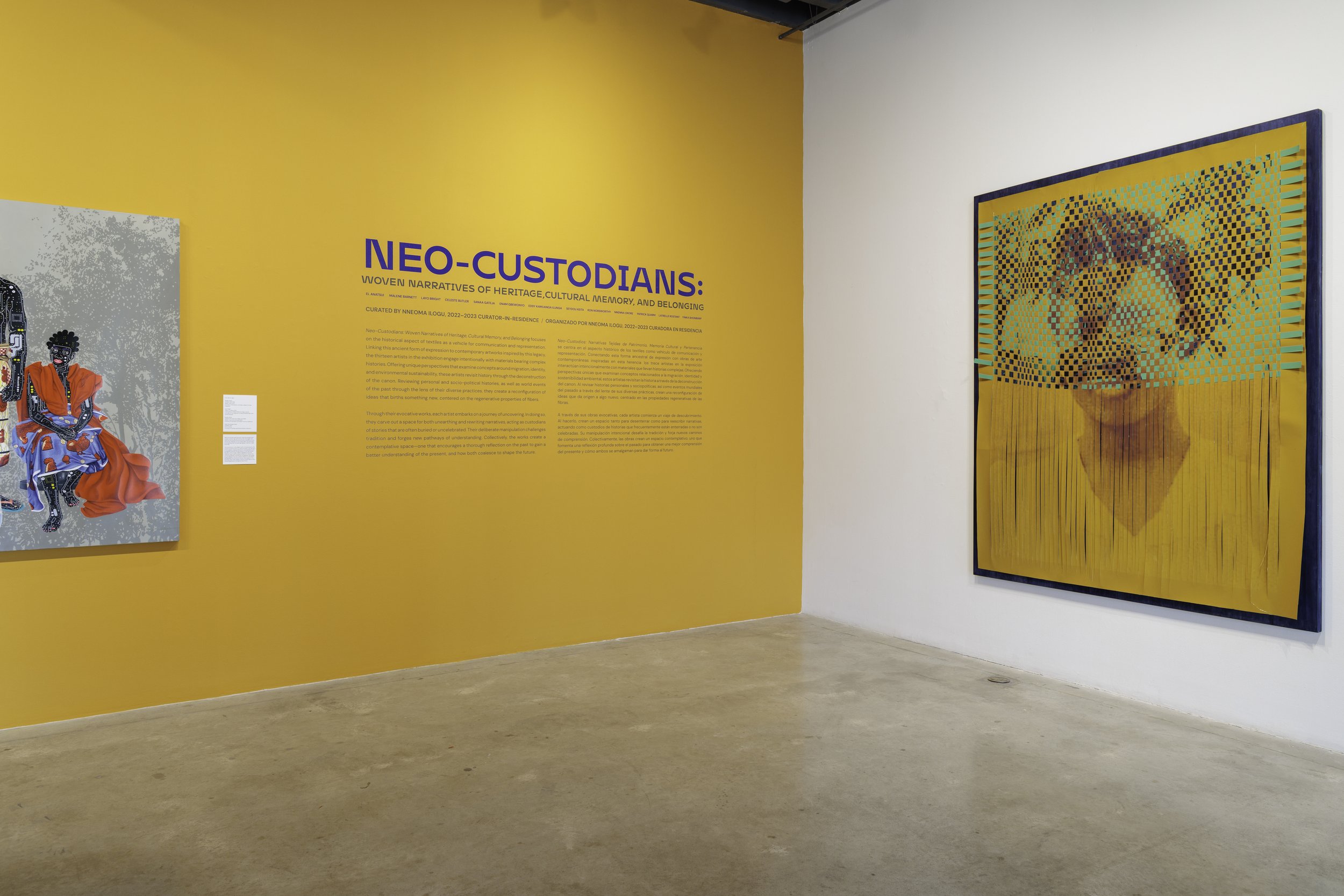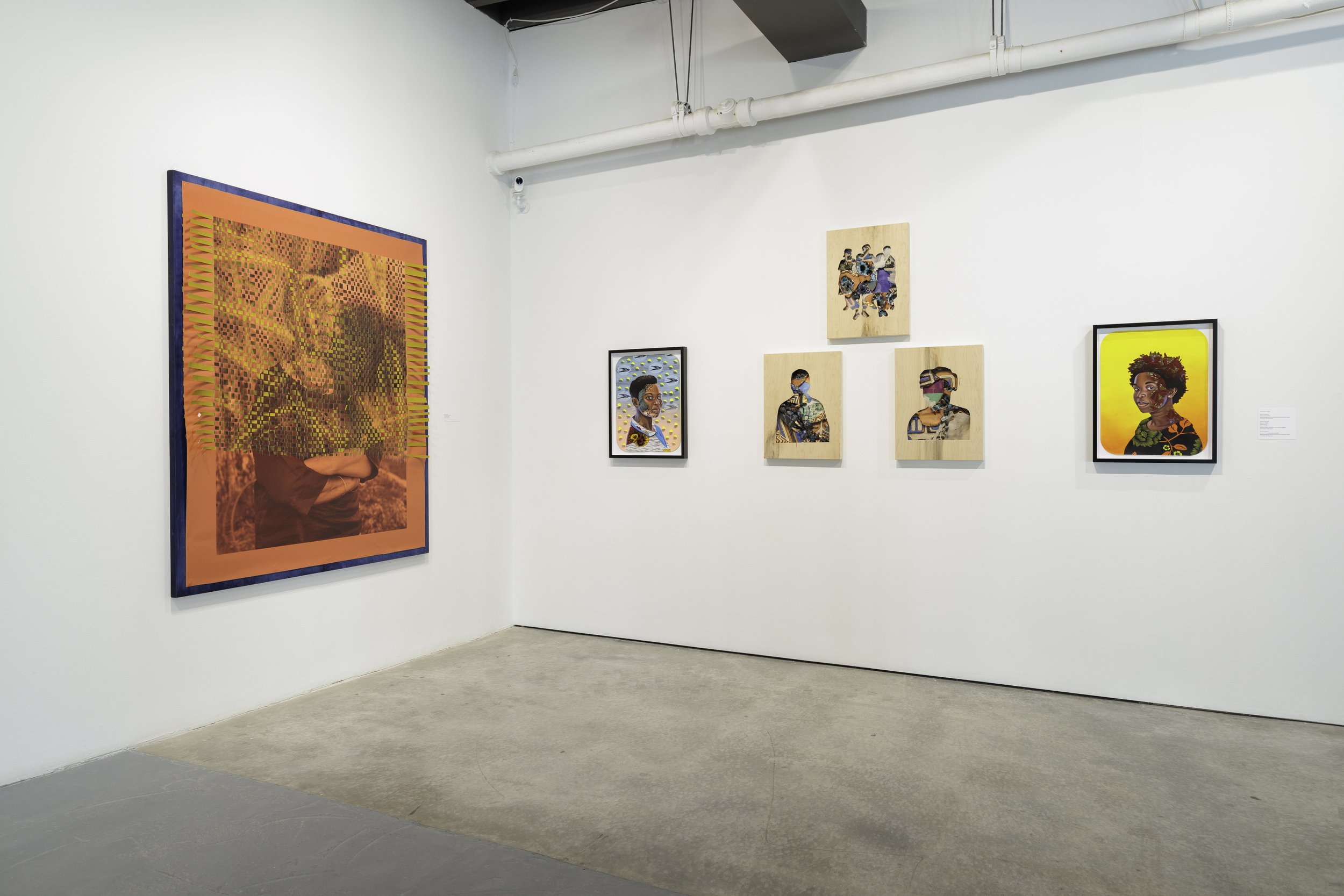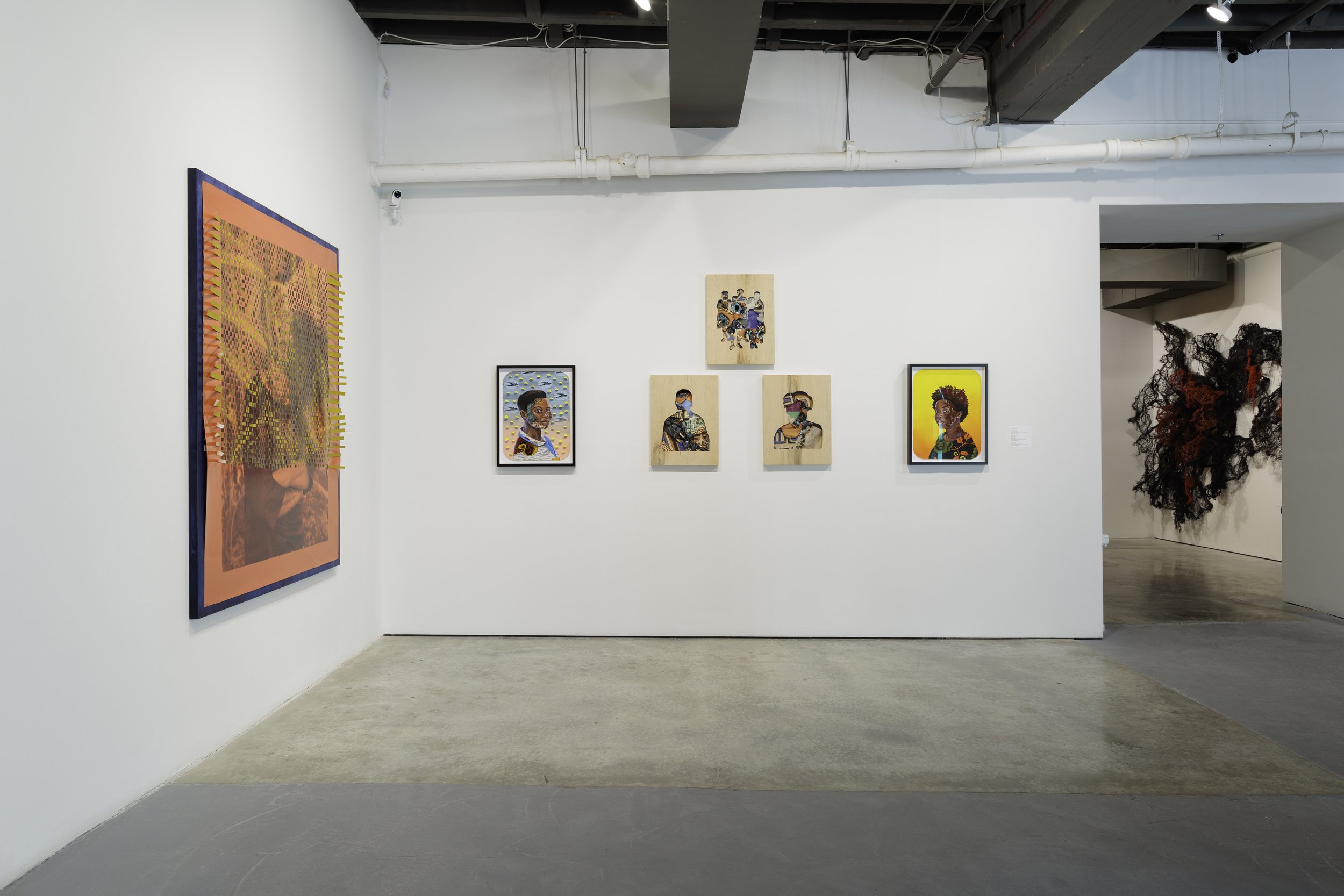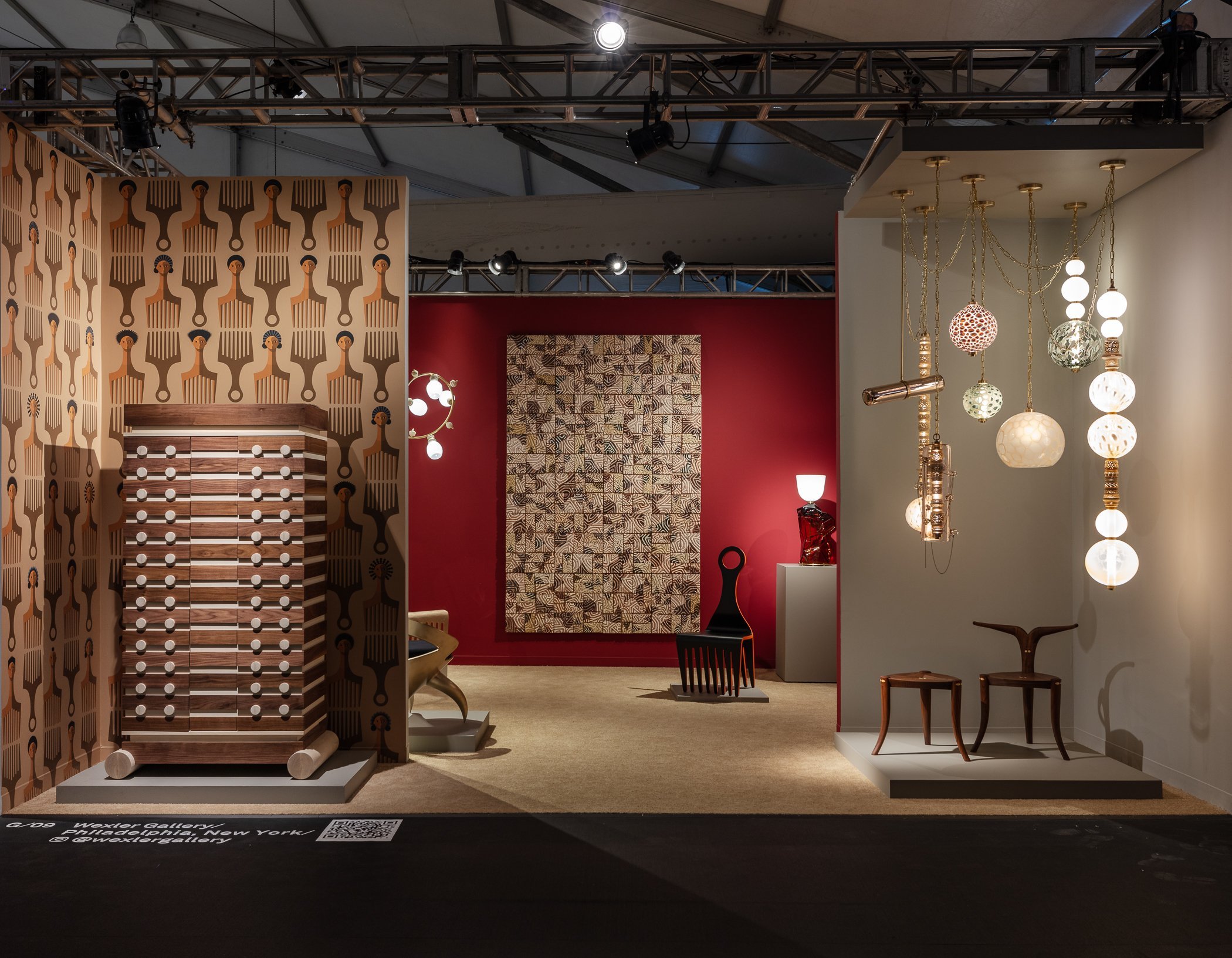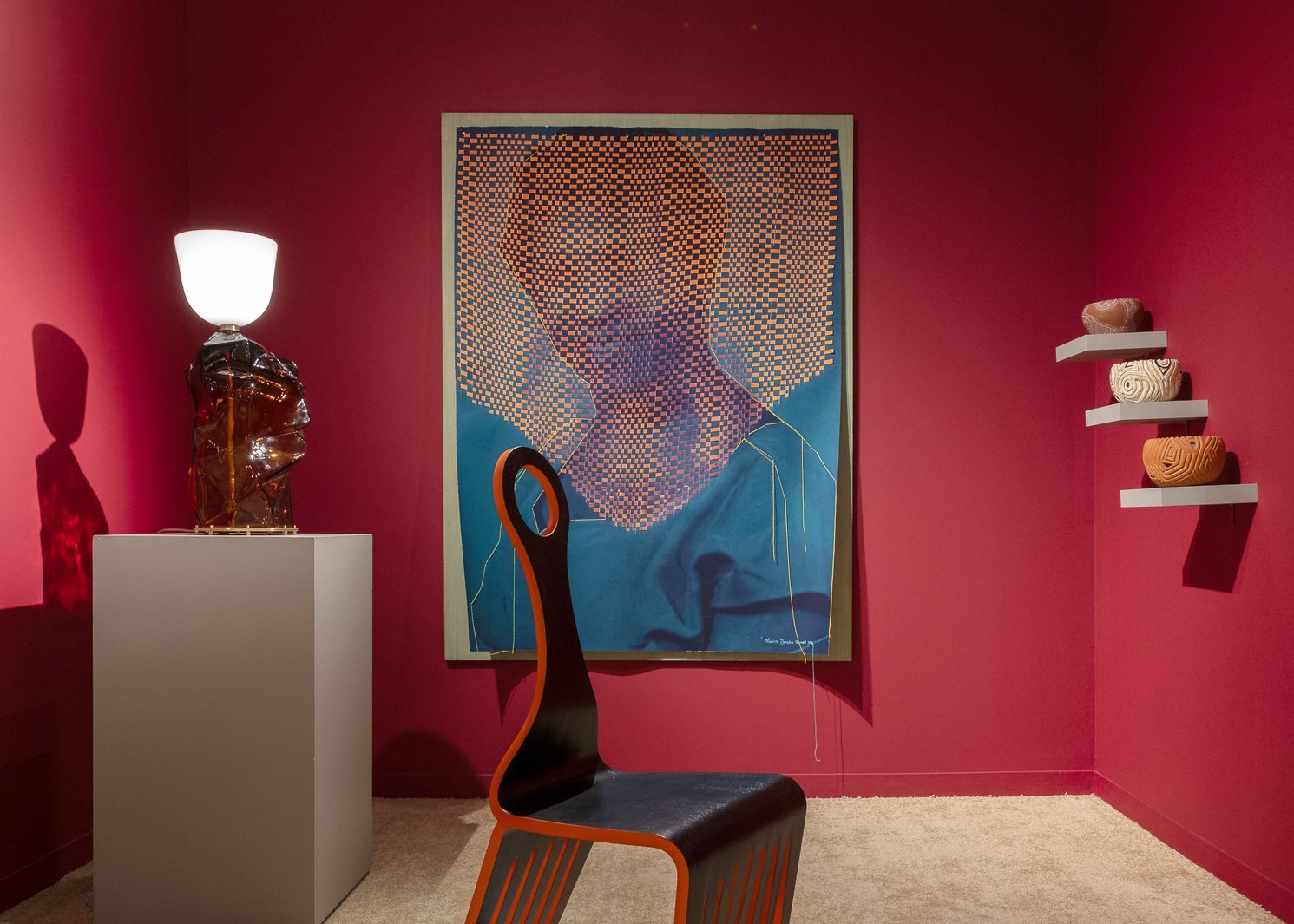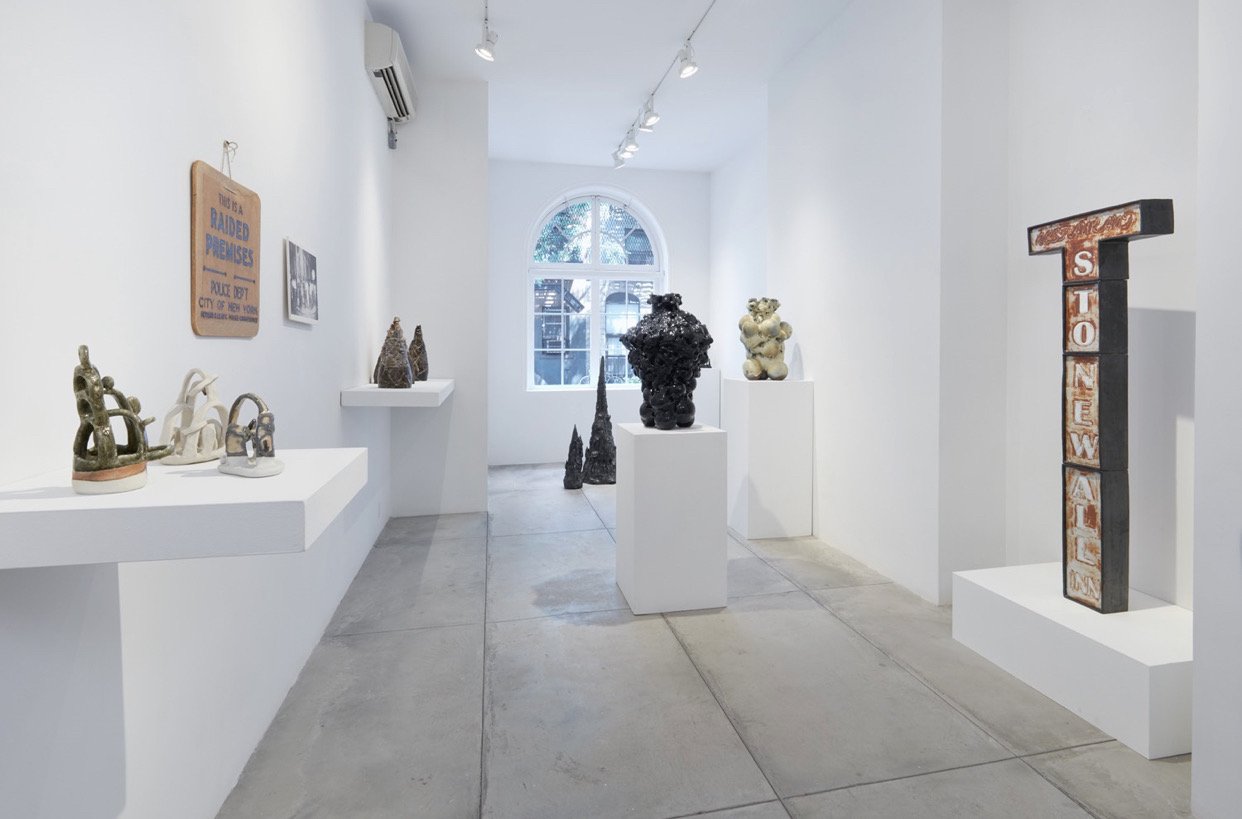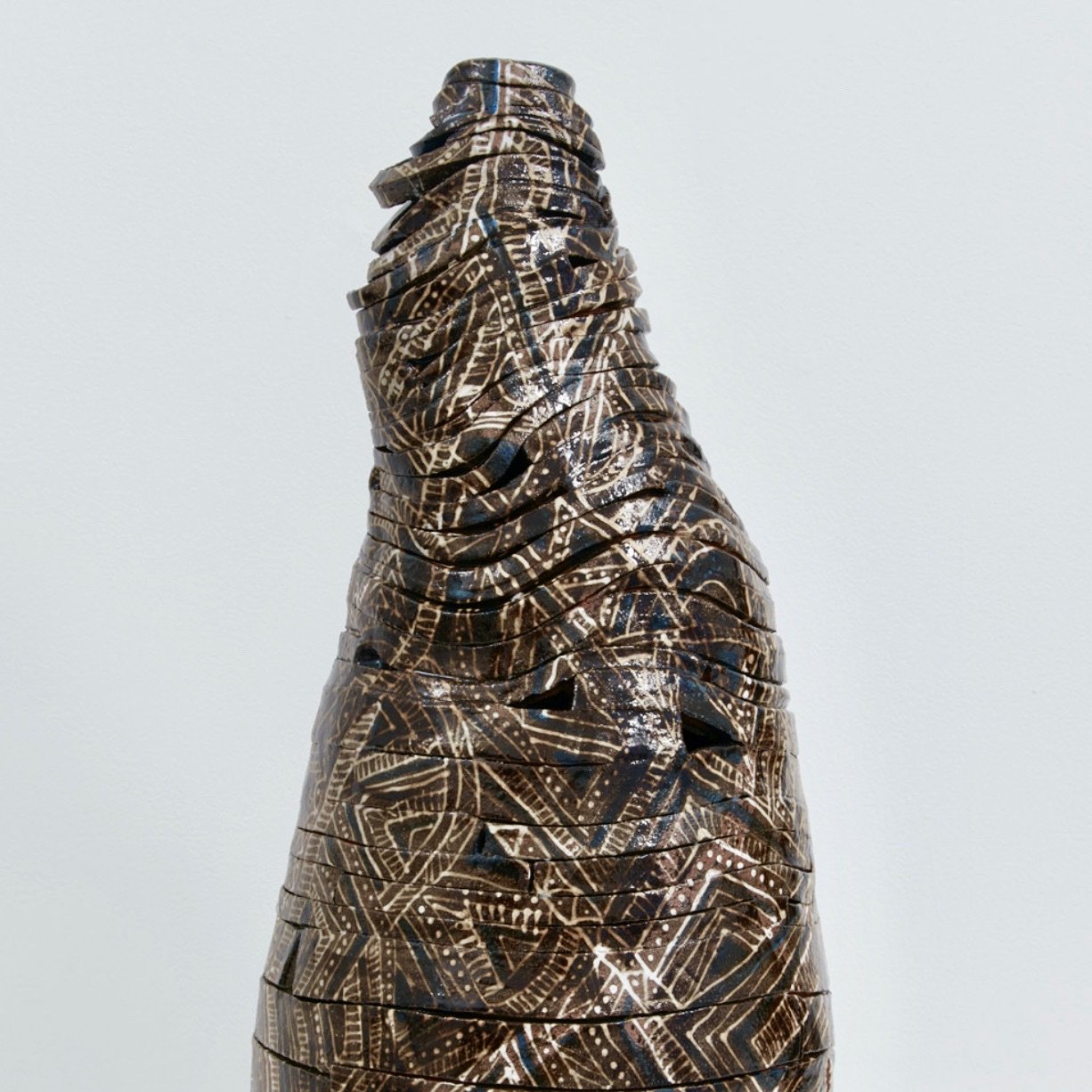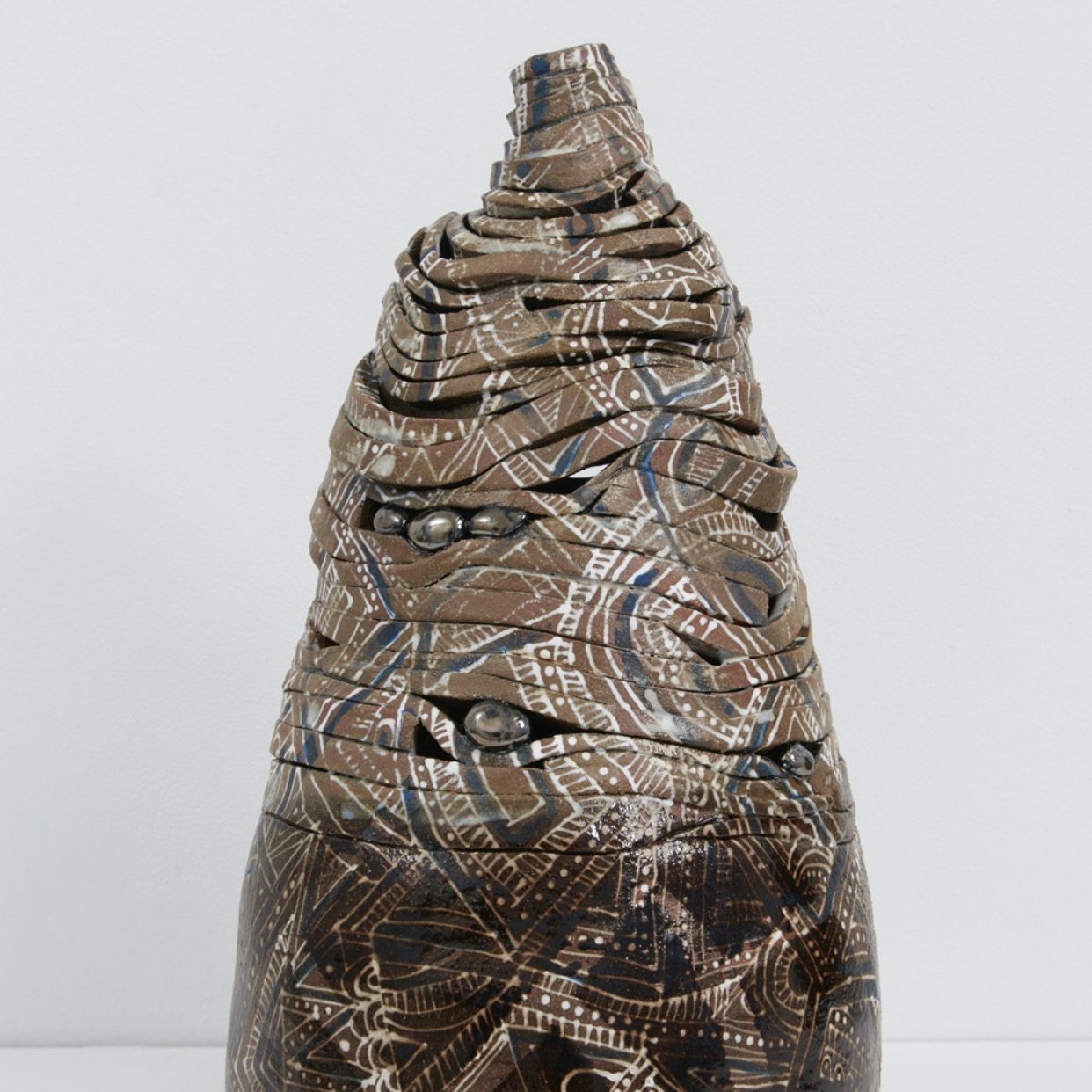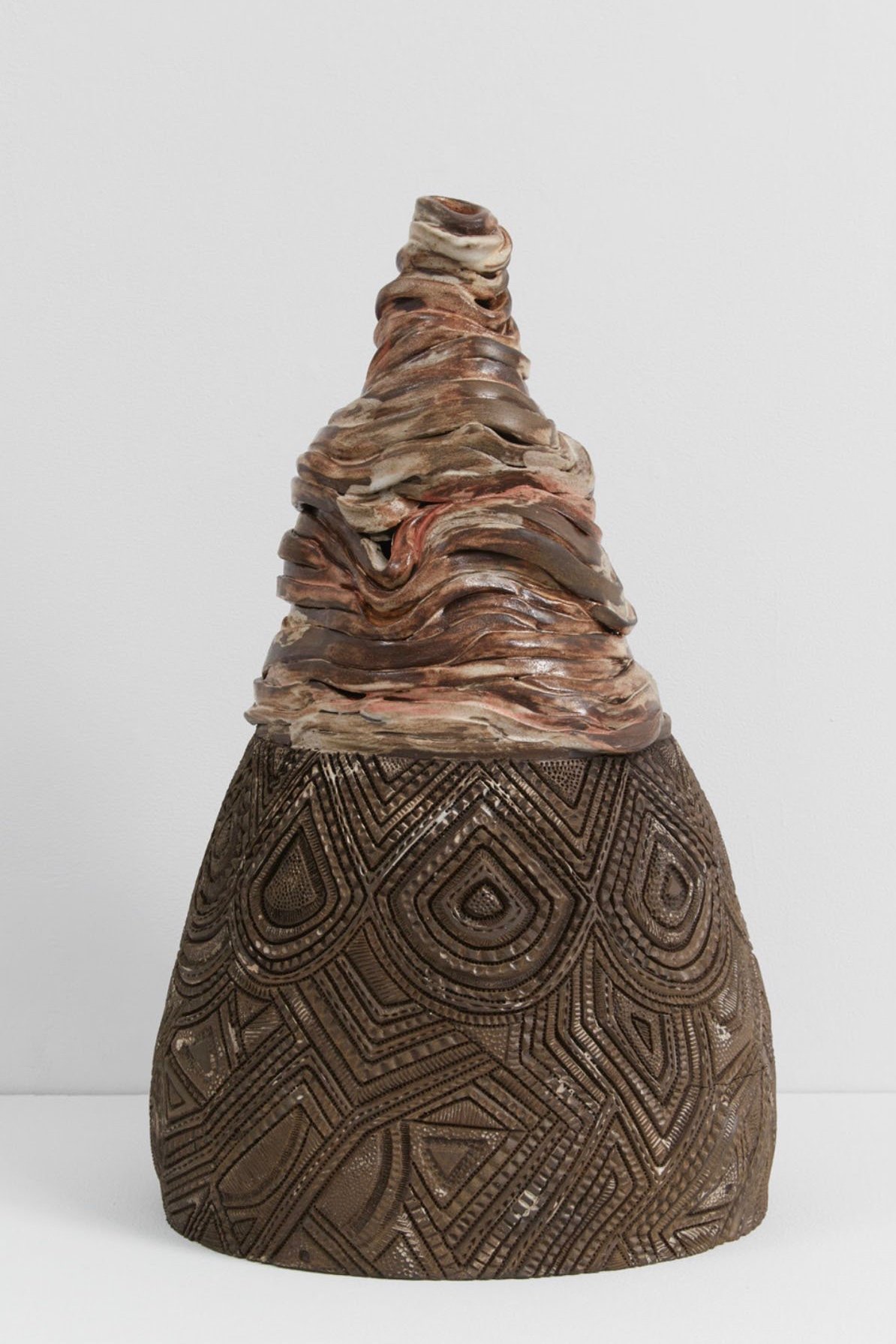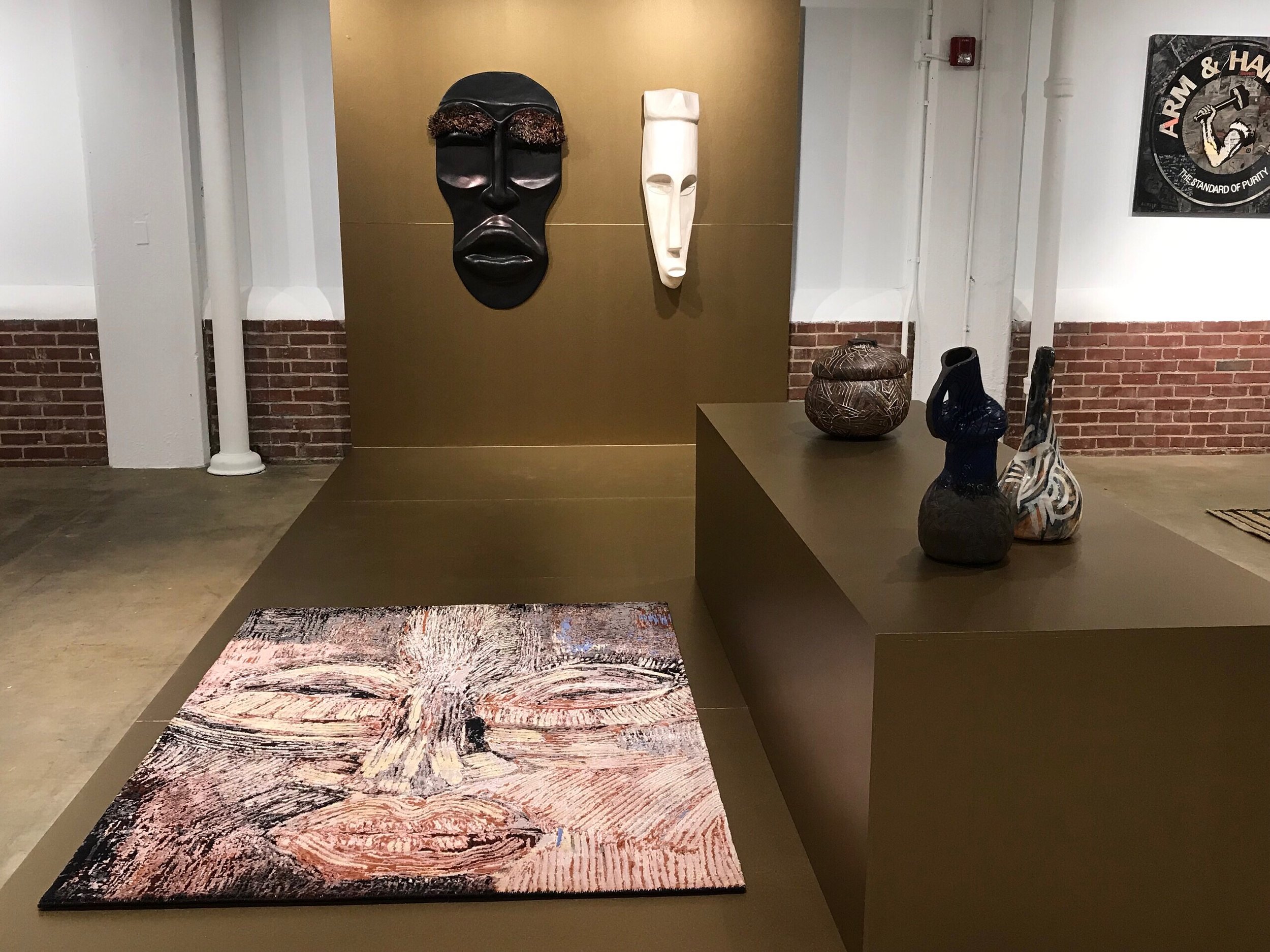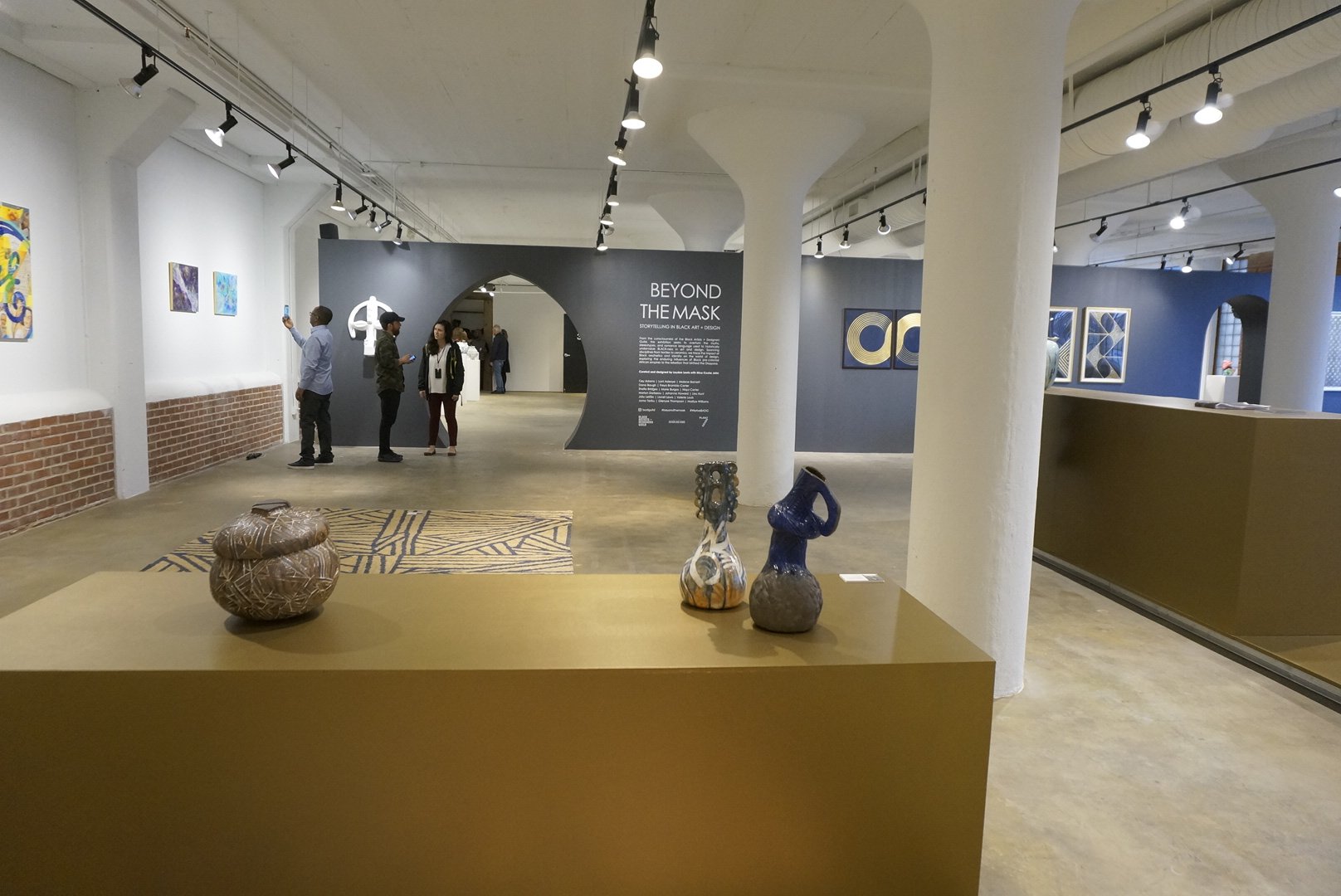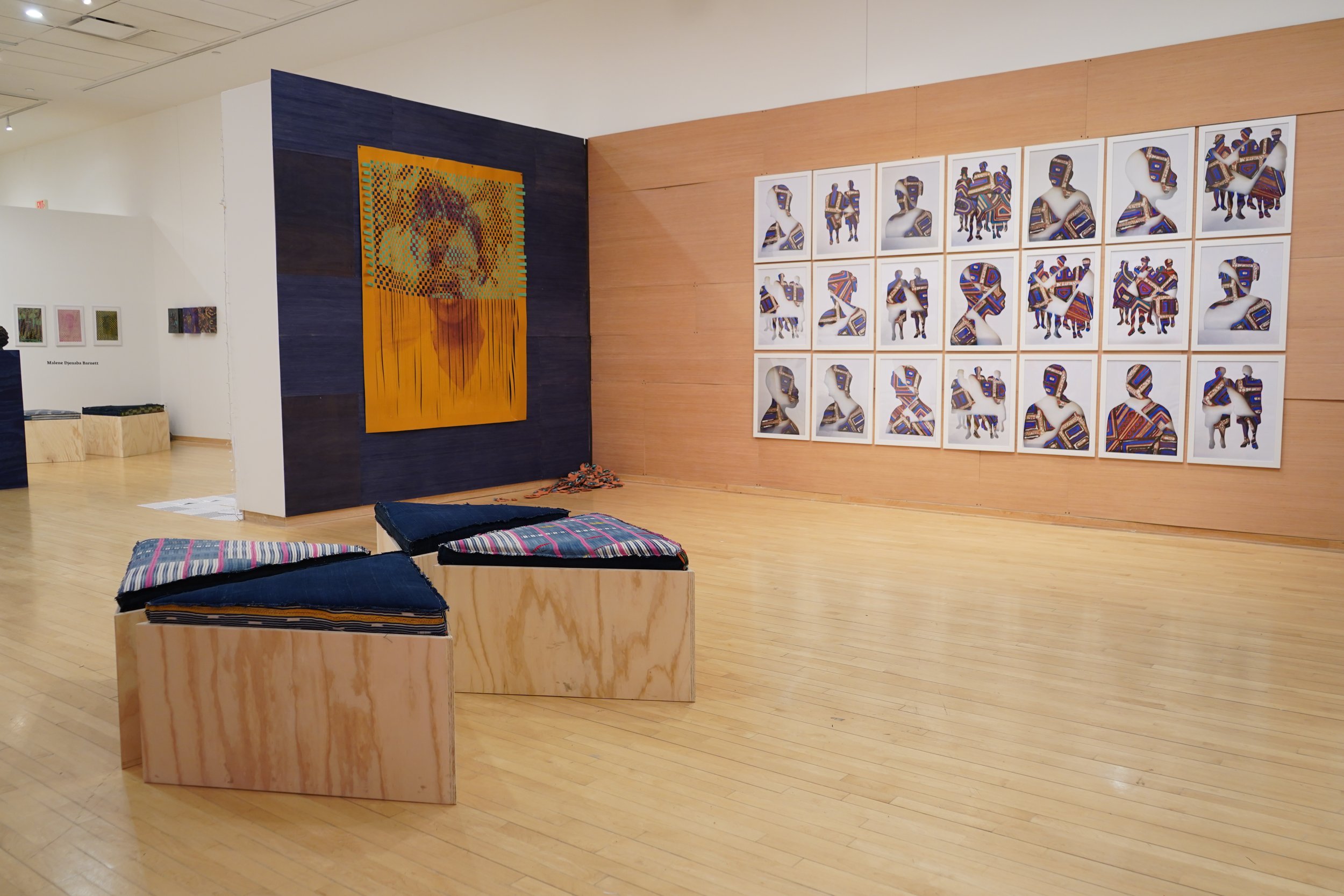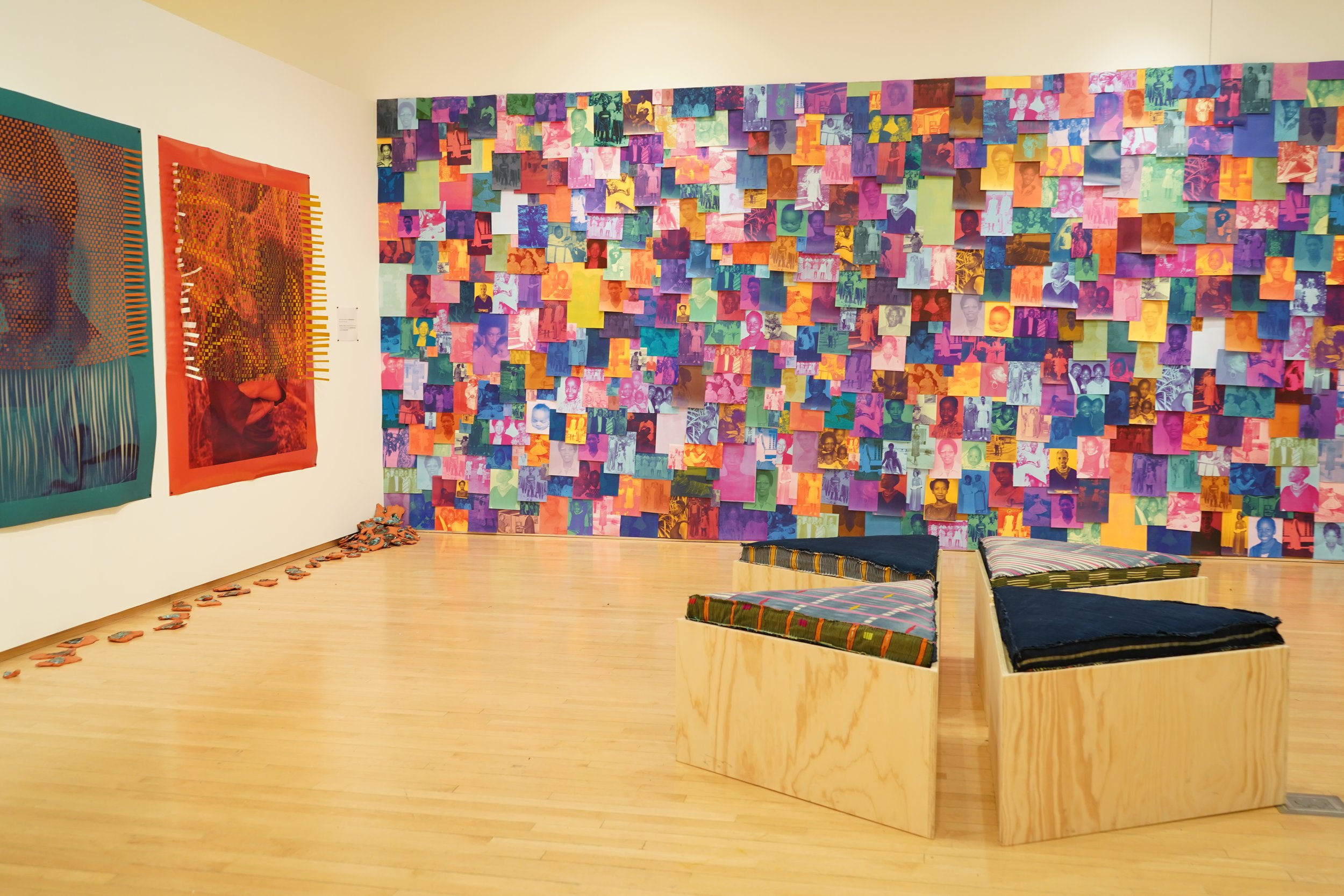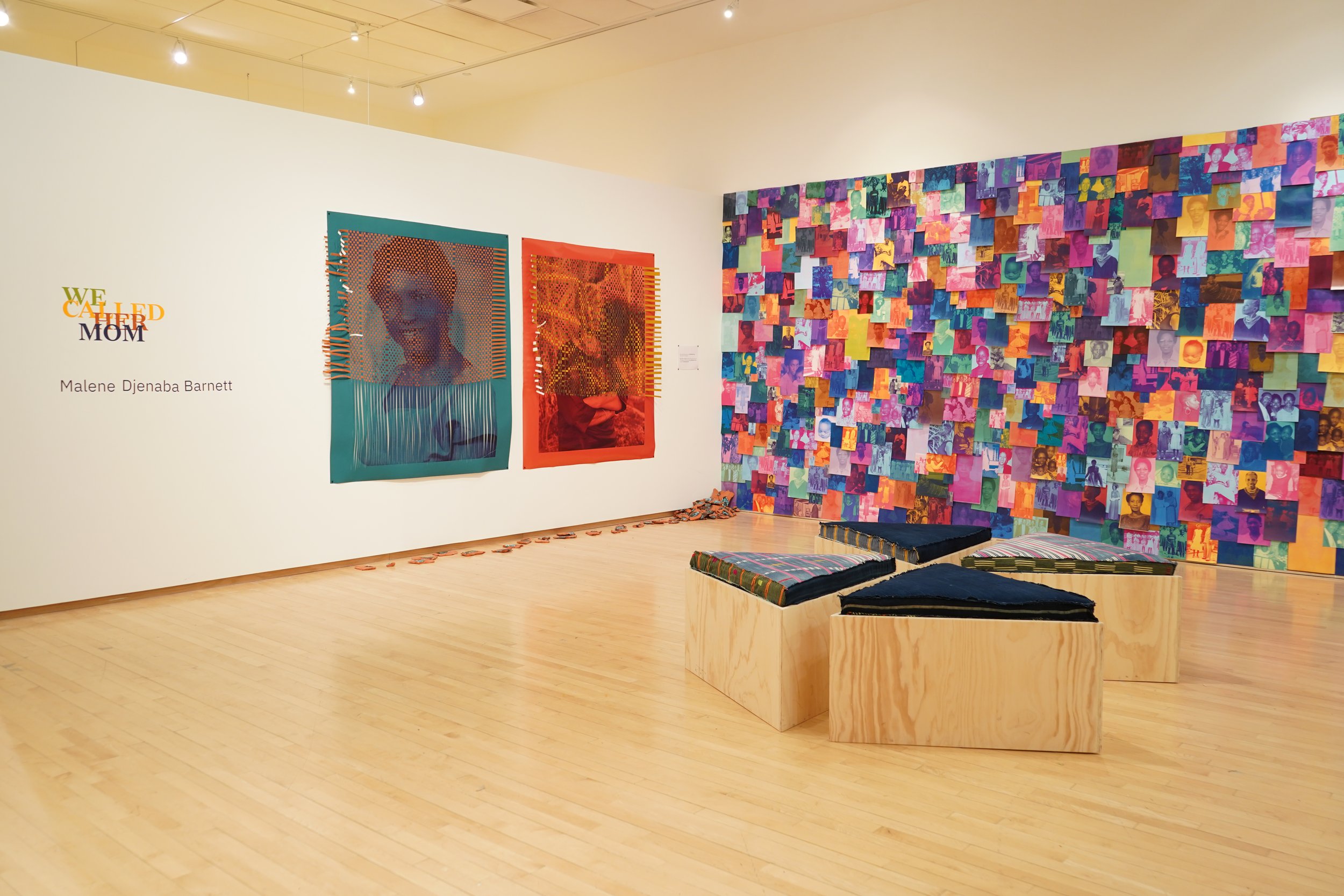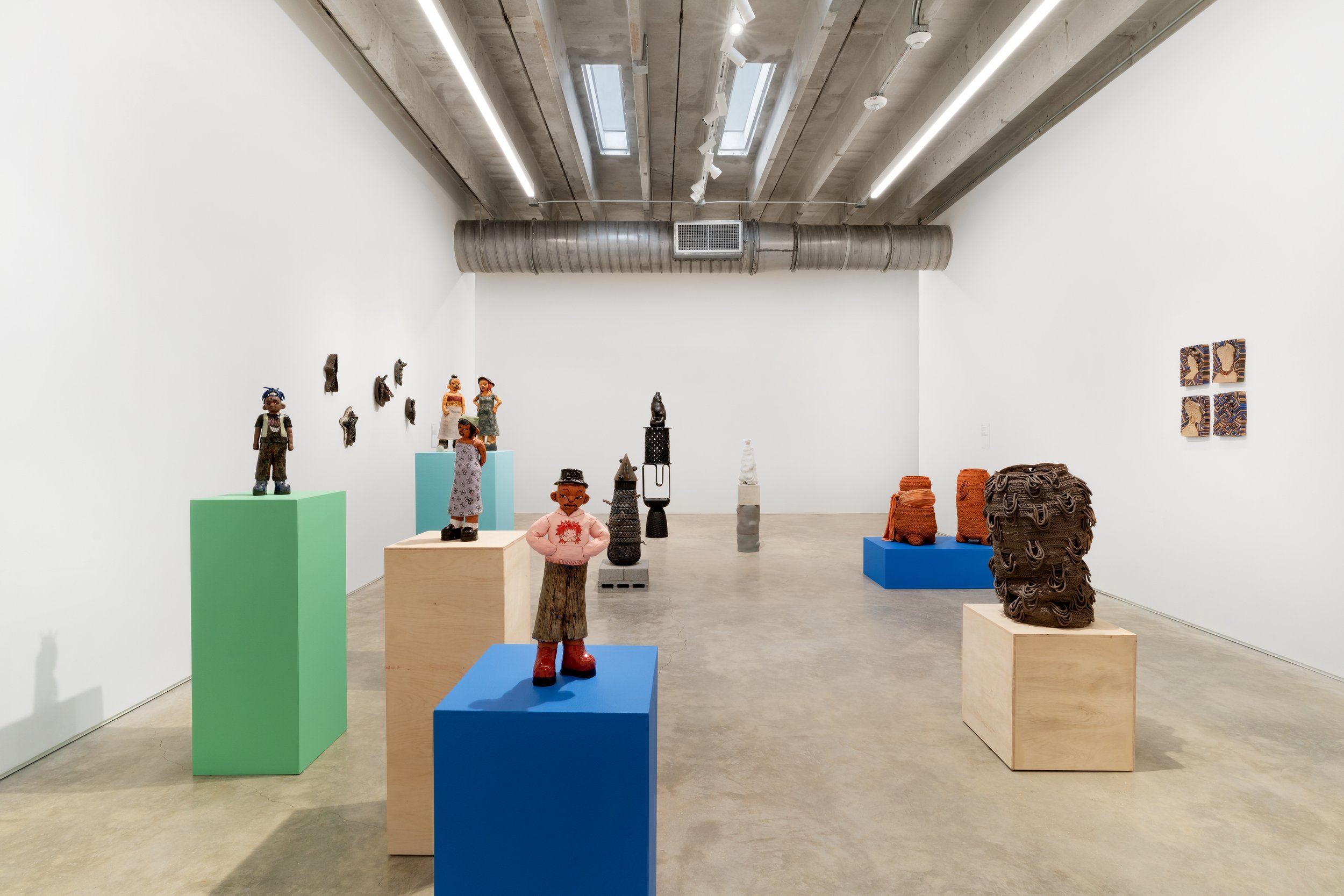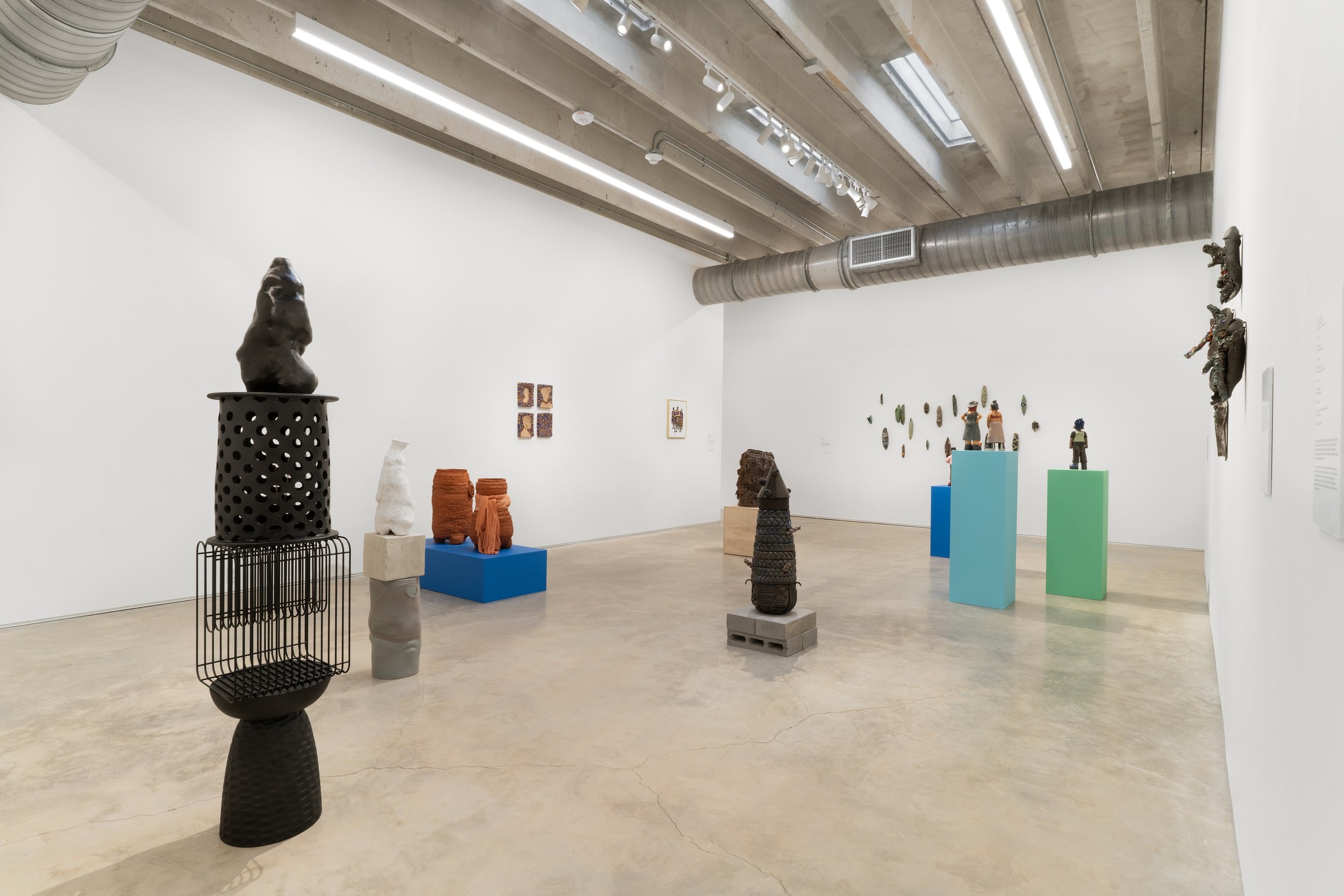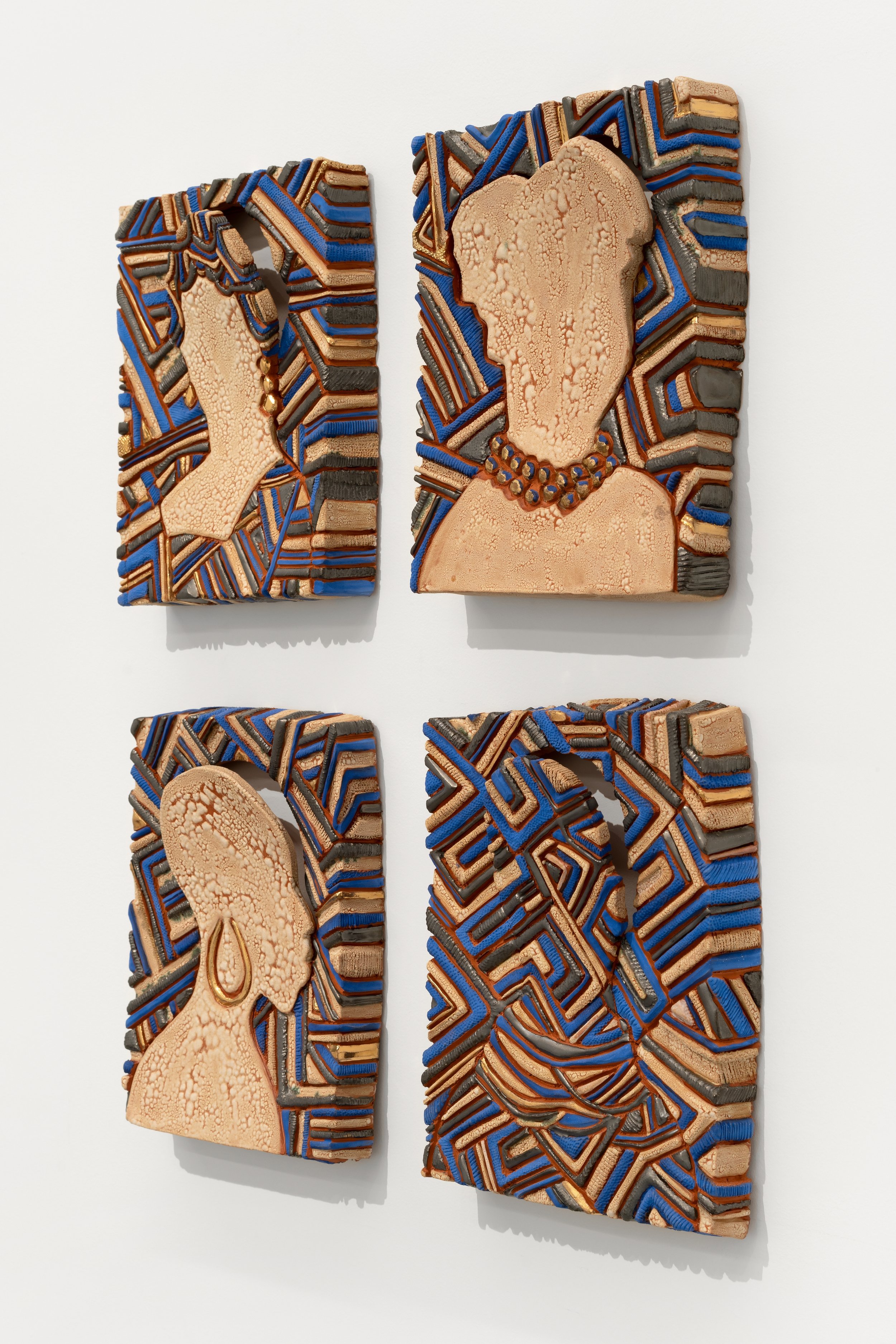Exhibitions
-
Liberatory Living: Protective Interiors and Radical Black Joy features designs, artworks, and environments dedicated to the global necessity for Black people to cultivate domestic interiors not only as spaces of revolutionary action, but also of radical joy and revolutionary rest. Conceptually, Liberatory Living evokes bell hooks’ concept of “Homeplace,” or those concrete spaces which inspire that [particular] feeling of safety, arrival, and homecoming—reminiscent of the warmth and belonging she experienced at her grandmother's home.
In tandem, Elizabeth Alexander's notion of the "Black interior" unfolds as a space of unlimited imagination—a "Black imaginary" that challenges us to envision what we are not meant to envision and captures themes society often overlooks including complex Black identities; genuine and actionable Black empowerment; and rampant and unfetishized Black beauty.
These two Black feminist frameworks collaborate in Lee’s curatorial idea of spaces crafted to incubate Black Joy, an idea that will be expressed theoretically and materially throughout the exhibition.
Liberatory Living features sixteen contemporary designers and artists whose furnishings, wall coverings, lighting, ceramics, and other atmospherics are brought together to suggest what might be necessary to construct and sustain a sense of safety and belonging, in response to the enduring need for beauty to bolster those sensibilities. The exhibit also blends custom and retail objects, showcasing a broad spectrum of work that reflects a persistent impulse to create spaces offering sensory circumstances for profound relief.
The first exhibition of its kind at Museum of the African Diaspora (MoAD), Liberatory Living: Protective Interiors & Radical Black Joy is an open invitation to deep, communal contemplation of contemporary interior design integral to dismantling destructive colonial legacies and opening spaces of Radical Black Joy without fetishizing Black strength and resilience.
Artists include: Andile Dyalvane, Angela Hennessy, Chantal Hildebrand, Cheryl R. Riley, Chuma Maweni, dach&zephir, Germane D. Barnes, Kapwani Kiwanga, King Houndekpinkou, Lina Iris Viktor, Malene Djenaba Barnett, Michael Bennett, Nandipha Mntambo, Norman Teague, Sandra Githinji Studio, Sheila Bridges, Traci Johnson, Zanele Muholi, Zizipho Poswa
-
The exhibition Kingston Biennial 2024: Green X Gold revolves around land, environment and ecology, taking inspiration from themes of the Jamaican flag. It also plays on the constructed depiction of Jamaica and the Caribbean as “paradise”, which is seen largely in tourism marketing, and contrasts it with ecological realities that are less publicised
-
NEO-CUSTODIANS: WOVEN NARRATIVES OF HERITAGE, CULTURAL MEMORY AND BELONGING focuses on the historical aspect of textiles as a vehicle for communication and representation. Linking this ancient form of expression to contemporary artworks inspired by this legacy, the thirteen artists in the exhibition engage intentionally with materials bearing complex histories. Offering unique perspectives that examine concepts around migration, identity, and environmental sustainability, these artists revisit history through the deconstruction of the canon. Reviewing personal and socio-political histories, as well as world events of the past through the lens of their diverse practices, they create a reconfiguration of ideas that births something new, centered on the regenerative properties of fibers.
Through their evocative works, each artist embarks on a journey of uncovering. In doing so, they carve out a space for both unearthing and rewriting narratives, acting as custodians of stories which are often buried or uncelebrated. Their deliberate manipulation challenges tradition, and forges new pathways of understanding. Collectively, the works create a contemplative space–– one that encourages a thorough reflection on the past in order to gain a better understanding of the present, and how both coalesce to shape the future.
Exhibiting artists include El Anatsui, Malene Barnett, Layo Bright, Celeste Butler, Sanaa Gateja, Enam Gbewonyo, Eddy Kamuanga Ilunga, Seydou Keita, Ron Norsworthy, Nnenna Okore, Patrick Quarm, Latrelle Rostant, and Yinka Shonibare.
-
Wexler’s Design Miami presentation celebrates the deep personal bonds between each artist and their respective home countries, while giving Barnett, Tariku, Kemahlioglu and Rusu agency to cultivate fresh applications steeped in tradition.
Malene Djenaba (Jen-nah-ba) Barnett’s debut showing with Wexler Gallery includes a transcendent terracotta tile installation called “Memories of Home,” that draws inspiration from her African Caribbean heritage and uses cultural memory to reconnect to mark-making in West African mud architecture.
-
The Jane Hartsook Gallery is pleased to present work by our 2018-2019 fellows and artists in residence: Malene Barnett, Sindy Butz, Donna Green, Phoenix Lindsey-Hall, and Kari Marboe. The Greenwich House Pottery Residency and Fellowship is a distinguished program that fosters artistic growth by providing artists with a creative community, time, space and materials to explore and generate new bodies of ceramic work in the center of the art world.
-
Our work illustrates experiences deeply rooted in black culture, utilizing iconic characteristics of black art and design, such as figurative motifs, traditional handmade processes, bold colors and textures—all packaged in a modern design aesthetic. When BADG had the opportunity to curate an exhibition at Plant 7 at Congdon Yards, High Point’s collaborative community space, we knew that we needed to create an experience that enriched the lives of Black Makers, while also issuing a call to arms to the wider industry.
Curated by BADG Founding Members Leyden Lewis, the exhibition found a common thread among our fine artists, ceramicists, textile and furniture designers to create a rhythm of diverse mediums, styles, and product categories. Works by Jomo Tariku, Marie Burgos, Lisa Hunt and Malene Barnett were featured.
-
WE CALLED HER MOM honors the first Black woman maker in my life; my maternal grandmother. Her name was Linda London, but we called her Mom. Mom was born in 1919 in Guyana, grew up in St. Vincent in the Caribbean, and died at age 54. She was a dressmaker, entrepreneur, and mother who sacrificed her well-being to pursue a better life in America for herself and her family. Through gathering fragments of intimate family histories consisting of photographs, oral stories, and my imagination -- my work is a reinvention of self and archival practices through the hands of Black women makers. Drawing from Map to the Door of No Return, Dionne Brand writes, "To live in the Black diaspora is I think to live as a fiction--a creation of empires, and also self-creation. It is to be a being living inside and outside herself. It is to apprehend the sign one makes yet unable to escape it except in radiant moments of ordinariness made like art." My self-creation began by tracing my heritage through DNA composites and comprehending the Black diaspora's creation in the Caribbean through the lens of Black women makers. The results brought me to Nigeria, Jamaica, St. Vincent, and the United States. I focused on each locale's makers, their textile and pottery histories, and the communities that fought for liberation against all forms of oppression. I constantly grappled with a traumatic and painful past, the limitations of both historical and family archives, and a constant reinvention of self. My work reimagined these absences to create beautiful objects holding joyful memories from ancestral pottery and textiles traditions brought to the Caribbean from West Africa. My focal point is four generations of women within my family: my great-grandmother, grandmother, mother, and myself. In each repetitive process and imagery, my work gives voice to the diversity of the diaspora, connecting the Caribbean to America.
In creating an archival practice through making, this work honors the souls of the named and nameless: a tribute to those who courageously pursued Black Life. Each object is a gift to the ancestors and an investment in Black archival futures. Shards of pottery will no longer be the primary source of our histories but rather the community's objects, documentation, and care.
-
The Universe within the Universe Within is not a definitive statement on who women-identifying and non-binary people of the Black diaspora are. Instead, it is a space that recognizes their limitless potential to be. Layered, dynamic, complex, nuanced, ever-evolving. A multitude of selves within the vessel of their bodies. Like our universe, mysterious and mystical, their interiority is rich and vast. This exhibition is a privileged glimpse into the wondrous multiformity within the spectrum of Black femininity and queerness. Extending over three rooms, eleven artists take up space, an understated form of resistance. Recurrent themes surveyed in the exhibition include the relationship between self and place, nurturing individual and collective identity, transformation, celebration, survival, ancestral lineages, navigating the problematic expectations and violence imposed on their bodies, and the importance of reclaiming childhood. The artists of The Universe Within use clay as their primary vehicle for storytelling. An ancient and elemental medium, long marginalized in the art world. Parallelly, the field of studio ceramics has notoriously underrepresented Black artists for decades, especially those who are women-identifying and non-binary. However, the sculptures and vessels, both abstract and figurative, created by the artists of The Universe Within demonstrate that clay—which is capable of impressive transfiguration—is an effective tool for empowering their narratives in their quest for liberation, connection, and beauty.
Visit the Universe Within








